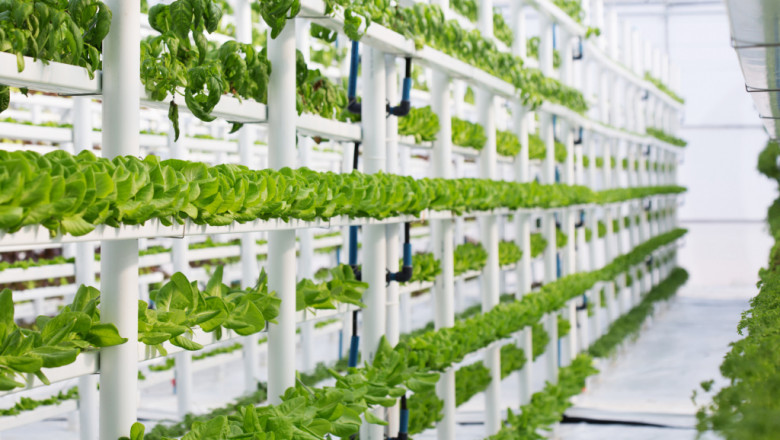views
The hydroponics market is rapidly evolving, driven by innovative technologies and sustainable farming methods. With the increasing global demand for fresh, pesticide-free produce and the limitations of traditional agriculture, hydroponics has emerged as a viable alternative. The market is witnessing continuous advancements in automation, smart monitoring, energy-efficient solutions, and eco-friendly nutrient management, reshaping modern farming.
1. Smart Farming and IoT Integration
One of the most significant innovations in the hydroponics market is the integration of smart farming technologies and the Internet of Things (IoT). Farmers now utilize IoT sensors, automated nutrient delivery systems, and AI-driven monitoring tools to optimize plant growth.
- Real-time Monitoring: IoT sensors track water pH levels, nutrient concentrations, temperature, and humidity, allowing farmers to make precise adjustments.
- Automated Systems: AI-based control systems automate lighting, irrigation, and nutrient distribution, reducing labor costs and human errors.
- Data-Driven Decisions: Advanced analytics enable farmers to predict crop health, prevent diseases, and maximize yields.
2. Vertical Farming and Urban Agriculture Expansion
Urbanization has led to an increased focus on vertical farming solutions, a crucial innovation in the hydroponics market. Vertical farms use stacked layers and controlled environments to maximize space efficiency and productivity.
- Urban Food Production: Vertical farms in cities reduce the reliance on rural agriculture and cut transportation costs.
- LED Lighting Advancements: Energy-efficient LED grow lights provide optimal wavelengths for plant growth, enhancing efficiency.
- Sustainable Resource Use: These farms use 90% less water than traditional agriculture, making them ideal for arid regions.
3. AI and Machine Learning in Hydroponics
Artificial intelligence (AI) and machine learning (ML) are playing a vital role in the hydroponics market by optimizing crop management and resource utilization.
- Predictive Analytics: AI predicts plant growth patterns, allowing better planning and reducing waste.
- Automated Crop Monitoring: Machine vision systems detect nutrient deficiencies, pests, and diseases early.
- Optimized Growth Algorithms: AI adjusts light exposure, water levels, and nutrients for maximum yield and quality.
4. Sustainable and Organic Nutrient Solutions
The hydroponics industry is shifting toward sustainable and organic nutrient solutions to promote eco-friendly farming practices.
- Biodegradable Nutrients: Innovations in organic nutrient formulations reduce environmental impact.
- Microbial Enhancements: Beneficial microbes improve nutrient absorption and plant resilience.
- Closed-Loop Systems: Recycling water and nutrients minimizes waste and conserves resources.
5. Energy-Efficient and Renewable Power Solutions
Energy consumption is a critical concern in hydroponic farming, and the industry is adopting renewable energy sources to enhance sustainability.
- Solar-Powered Hydroponic Systems: Solar panels reduce reliance on fossil fuels and lower operational costs.
- Geothermal and Wind Energy: Alternative energy sources power hydroponic farms in remote locations.
- LED Efficiency Improvements: Energy-saving LEDs minimize electricity usage while maintaining high crop yields.
Conclusion
The hydroponics market is experiencing a technological revolution, making sustainable and efficient farming more accessible than ever. Innovations such as AI-driven automation, smart farming technologies, vertical farming, and renewable energy solutions are shaping the future of agriculture. As the demand for fresh and locally grown produce increases, hydroponic farming will continue to evolve, providing a reliable and eco-friendly alternative to traditional agriculture.






















Comments
0 comment